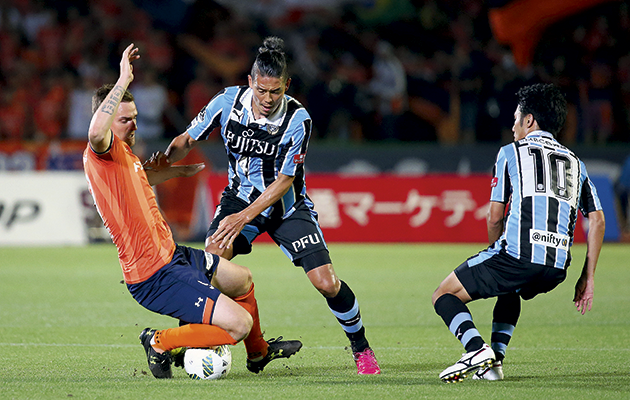In terms of crowds, international profile and the performance of its clubs in the Asian Champions League, Japan’s top flight may still believe it rules the roost over the Chinese Super League. But when it comes down to finances, there is only one winner.
Having splashed out around $350million on players in the January transfer window alone, Beijing has easily moved ahead of Tokyo when it comes to being first in the queue to import new foreign talent.
However, the balance could start to be redressed in Asia after the J.League announced a 10-year broadcasting-rights deal worth $2billion with UK media content company Perform Group.
Established in 1993, the J.League grew quickly thanks to the involvement of world famous stars such as Zico, Dunga, Dragan Stojkovic and Toto Schillaci. By the end of the last decade, the average attendance was around the 19,000 mark, its clubs had won two recent Asian Champions League titles, home-grown players were succeeding in Europe and the national team was increasingly respected around the world.
But while the country’s football fans took great pride in seeing youngsters such as Shinji Kagawa go to Borussia Dortmund and Takashi Usami head to Bayern Munich, some believed too many players were going West too soon and it was becoming detrimental to the J.League. At the same time, the standard of imports – both coaches and players – started to slip.
And after disappointing national team performances at the 2014 World Cup and 2015 Asian Cup, and a poor recent record in the Asian Champions League, Japanese football has found itself stuck in something of a rut.
Meanwhile – helped by the arrival of stars such as Hulk, Jackson Martinez, Alex Teixeira and Ezequiel Lavezzi, and coaches Marcello Lippi and Luiz Felipe Scolari – the game is booming in China. Last year average attendances were up to 22,000 and they may even top 25,000 this season.
The J.League’s new investment of $200m a year over the next decade – which was announced in July and is for online rights only – is considerably larger than the league’s entire 2015 revenue of $128m.
It is the biggest commercial agreement in Japanese sporting history and could help to reshape Asia’s football landscape.
While some of the money will go towards developing infrastructure and helping to improve the matchday experience, there will also be cash available to enable clubs to buy new players and keep existing talent for longer.
While the average J.League side is unlikely to be able to match the biggest spenders in China, a few extra million will make a big difference – especially as Japanese clubs currently produce better home-grown players through their youth development systems than their rivals in China.
While South Korea’s K-League is still the most successful in Asian Champions League terms, many of its clubs are struggling financially, so the battle to be Asia’s number one domestic competition looks set to be intense.
By John Duerden







